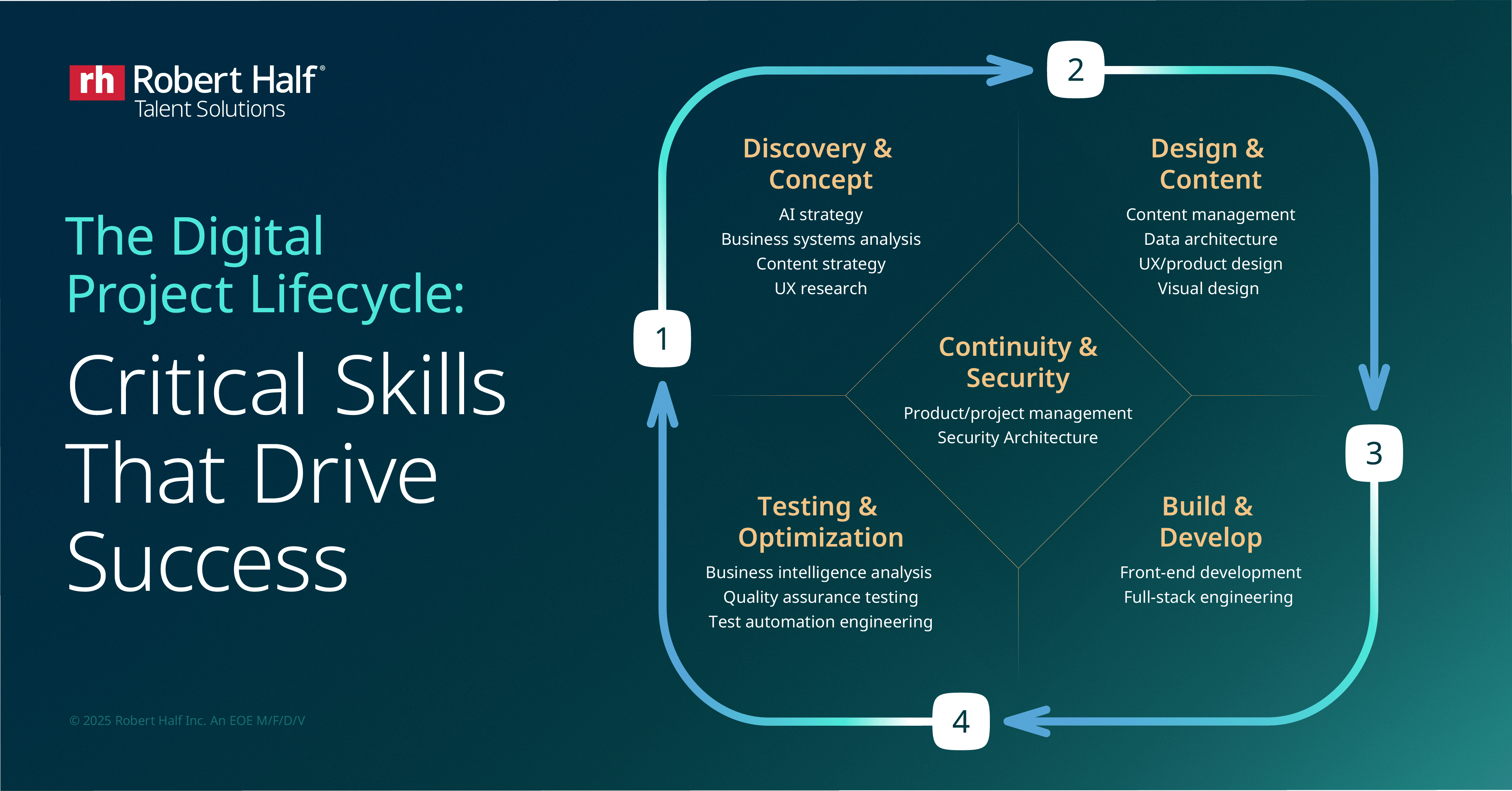The role of AI across the digital project lifecycle
Artificial intelligence is shaping how digital teams operate. UX researchers use AI-enabled tools to analyze feedback at scale, developers rely on coding assistants to accelerate builds, QA teams expand coverage with automated testing and security architects deploy AI to identify risks in real time. Even project managers and content leaders are adopting AI-driven platforms to forecast outcomes, tailor messages and improve workflows.
For professionals, fluency with AI tools is becoming a core skill. For organizations, balancing technical expertise with emerging capabilities is essential to deliver digital products that are faster, smarter and more personalized.

